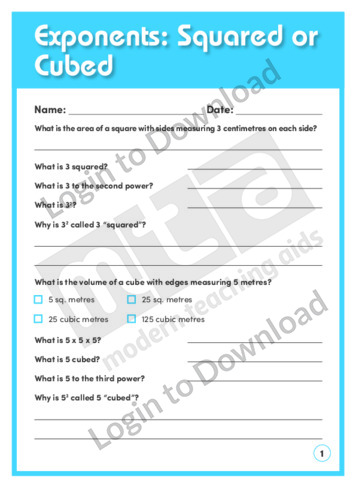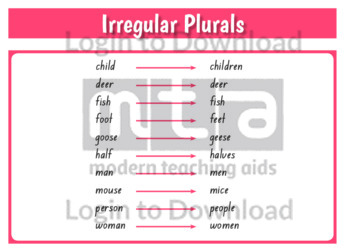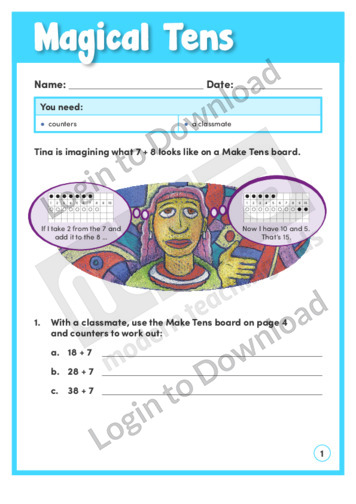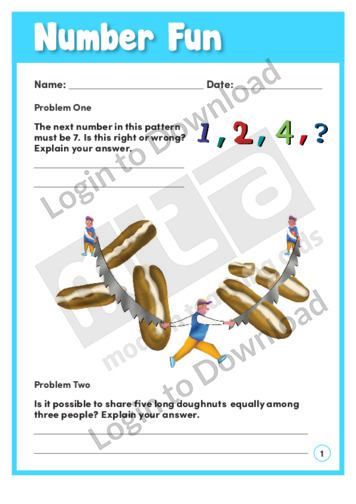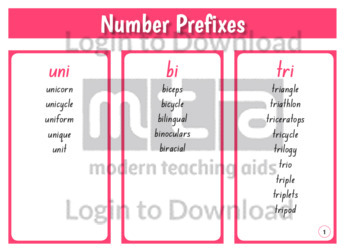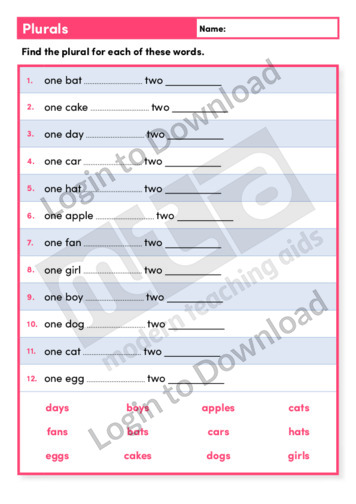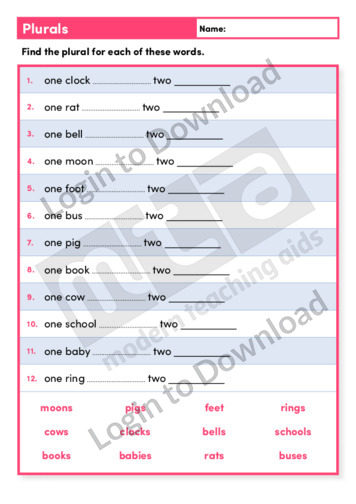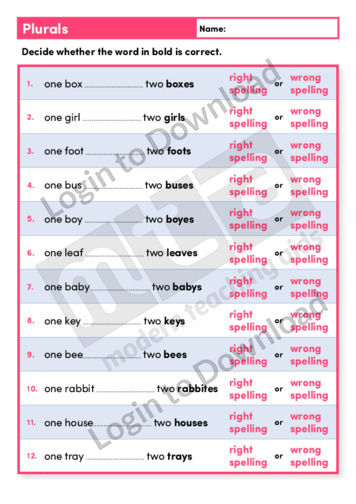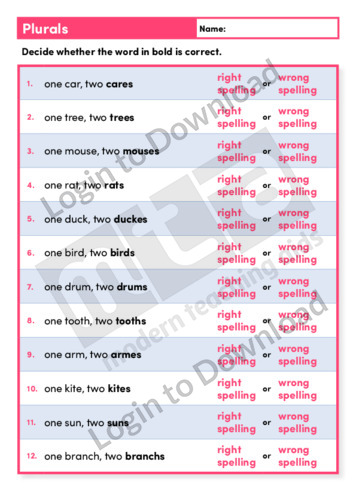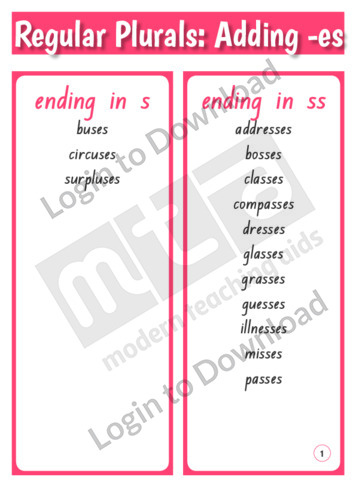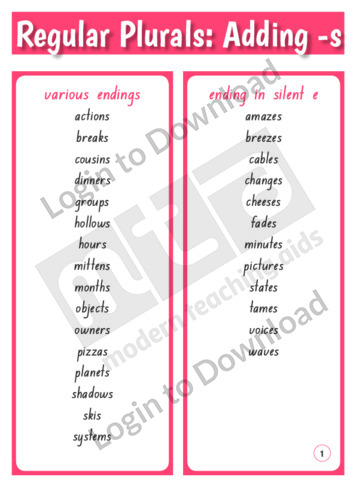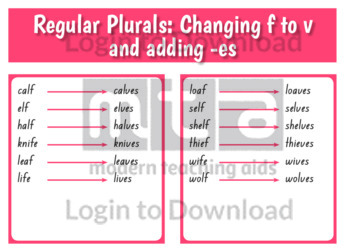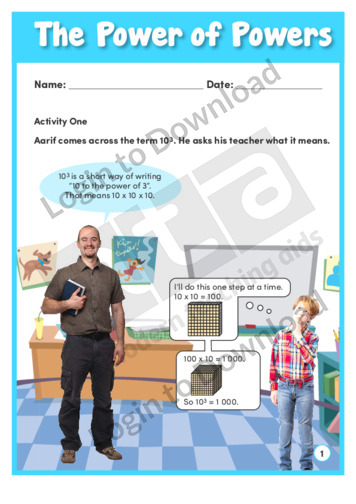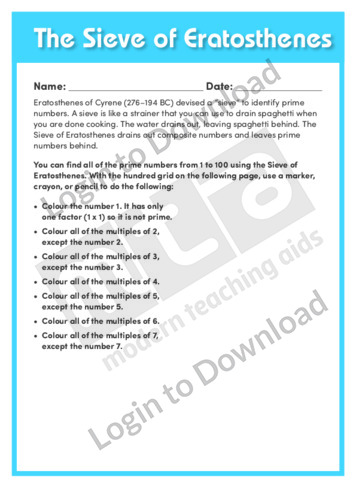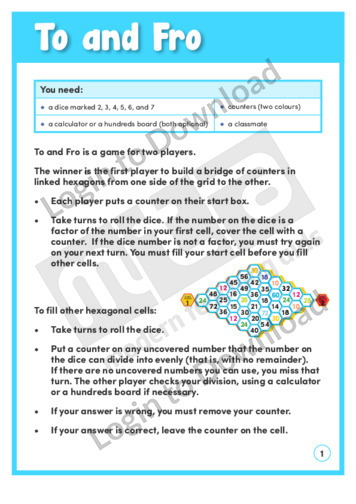This number and operations worksheet, ‘Exponents: Squared or Cubed’ allows for practice with square and cubic units. Answer sheet provided with file download.
This number and operations worksheet, ‘Expression: Factors and Exponents’ allows for practice with exponents. Answer sheet provided with file download.
This spelling patterns word list, ‘Irregular Plurals’ features high-frequency plurals that do not follow the normal pluralisation rules. It includes some of the most commonly occurring examples of irregular plurals that children are likely to encounter in early reading exercises and is designed to aid language development.
The learning activity, ‘Magical Tens’ shows students how they can use a ‘make tens’ board to learn a useful addition strategy. By using the board, students develop skills such as visualising and identifying patterns. Ultimately, they will not need to use the tens board, but will be able to manage part-whole thinking in their heads. …More
The learning activity ‘Number Fun’ is designed to be used as a short starting point for a lesson. The problems will generate discussion about the way students think about solving problems, and the strategies they can use. An answer sheet is provided and includes teaching notes to support learning and further exploration.
This spelling patterns word list, ‘Number Prefixes’ introduces students to common prefixes that indicate quantity or form. It includes some of the most frequently occurring examples that children are likely to encounter in early reading exercises and is designed to aid language development.
This spelling activity, ‘Plurals’ provides opportunities for practice with finding the plural form of each noun.
This spelling activity, ‘Plurals’ provides opportunities for practice with finding the plural form of each noun.
This spelling activity, ‘Plurals ‘ provides opportunities for practice with correctly spelling the plural form of common nouns.
This spelling activity, ‘Plurals ‘ provides opportunities for practice with correctly spelling the plural form of common nouns.
This spelling patterns word list, ‘Regular Plurals: Adding -es’ features high-frequency words that follow the ‘-es’ pluralisation rule. It includes some of the most commonly occurring examples that children are likely to encounter in early reading exercises and is designed to aid language development.
This spelling patterns word list, ‘Regular Plurals: Adding -s’ features high-frequency words that follow the ‘-s’ pluralisation rule. It includes some of the most commonly occurring examples that children are likely to encounter in early reading exercises and is designed to aid language development.
This spelling patterns word list, ‘Regular Plurals: Changing f to v and adding -es’ features high-frequency words with ‘f’ endings that change when they are pluralised. It includes some of the most commonly occurring examples that children are likely to encounter in early reading exercises and is designed to aid language development.
The Power of Powers’ uses a multi-level house as a model to help students understand how powers of numbers work. It is a learning activity that helps develop students’ understanding of powers and the place values of large numbers. An answer sheet is provided and includes comprehensive teaching notes for supporting learning and further exploration.
This understanding numbers worksheet, ‘The Sieve of Eratosthenes’ asks students to practise understanding prime numbers.
To and Fro’ is a game for two players that gives students practice in recognising the factors of numbers. Students take turns to roll dice and cover numbers that have the dice number as a factor. An answer sheet is provided and includes teaching notes with suggestions for supporting learning and further exploration.
It�s that easy!

